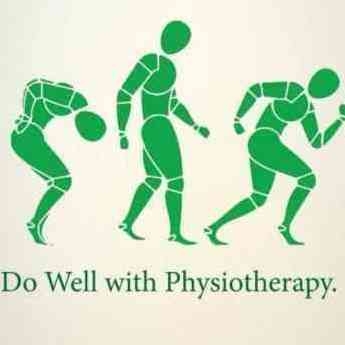+918042754929

This is your website preview.
Currently it only shows your basic business info. Start adding relevant business details such as description, images and products or services to gain your customers attention by using Boost 360 android app / iOS App / web portal.
Slump test.... What is this test for? Ive got asked to explain what this test is about and when to use it. Well, when do you use it? How do you use it? Slump test is designed for identifying neural tensional dysfunction. What does it mean? It means that there may be a neuropathic problem. However, do we know what causes it? Do we know what structures are involved in this neural problem? Of course not as everything under the skin blends together. Id love to emphasize that this test is not utilised to detect disc herniation. Why? Isnt it a disc problem if there is a neural dysfunction? Well, how are you so sure? People with disc herniation on MRIs often report no pain in their back and leg. There is a poor relationship between structural changes and pain. What am I telling you about? This means that a disc herniation is not always a contributing factor for the tensional problem in terms of sciatica. It can be but how important is it to find whether or not this is a disc problem. Id say.. none. Why? 1. Can we push it in? Can we alter its shape? Nope. The nuclear pulposus that protrudes out of the disc contains 80% of water, meaning impossible to force it in cuz it is not concrete. 2. All structures in the lower back are innervated. Once one of them is irritated at L4/5/S1/2/3, you can get sciatica. What does it mean to you? Anything that is innervated from L4 to S1 can be leg pain source. 3. Does disc herniation mean always discogentic leg pain? Nope.. disc herniation is very narutal and starts to herniate at early 20s. Even though it is compressing a nerve root on MRIs, people dont really compain any pain or neurological deficits. Why is that? Your body is stronger than you think. The nerve has 3 layers that protects it from overtension and compression. As these layers strongly support the affected nerve seen on MRIs against disc compression, it doesnt get negatively affected. It can be completely symptome free. Therefore, just looking at the imagings won't help you diagnose much and this is a limited diagnostic method for sure. Better to use SLR test and/or Slump test for further assessments. 4. Who are we treating? Ye you heard me. Who are you treating? Im sure that your job is what? Treating your patients. Why am I asking this? We are treating someone who seeks for help. In other words, we are not treating their imagings. Assess the person in pain right in front of you rathef than their MRIs. When do you use the Slump test? I dont use it straight up to someone with acute pain. Why is that? Cuz the huge difference between the slump test and SLR test is the different degree of nerual tensional application. What does it mean? Think of how you implement SLR. Your patient lies supine without Lx flexion while you are passively rasing the affected leg up. A nerve is mobilised to where tension is applied. Since there is no Lx flexion during SLR, less or no neural tension through the Lx region What if you add Lx flexion to it ? It is not properly applicable in supine and not a great testing technique due to the fact that it encourages abdominal muscle contraction. Why is it a matter? It will alter your pelvis into posterior tilt. What happens afterward? Ye it slackens your sciatic nerve, meaning not an accurate test result presented. Lets imagine that you are allowed to add Lx flexion to SLR in supine! As I said before, a nerve moves to where tension is applied. So where is the neural tension gonna be? Yes, increased neural tension in the lower back which can aggrevate anyone with irritable lower back pain. I mean that the reason we physically test our patients is that we want to reproduce their usual pain so figure out what movements should be carefully reassessed after treatment and can be a problematic factor. So again, the biggest difference between SLR and slump test is increased neural tension during Lx flexion. As slump test is more provocative, I use it for someone with subacute pain or chronic who has been better but needs to have further assessments. His symptoms are better which means that you are allowed to carefully apply more tension to the affected nerve. In other words, more challenge to the nerve. For instance, think of rehabbing injuried runners. Once they have an acute knee injury, would you get them to run to see what movements cause their knee pain? Of course no. Their irritability is high so they need to be carefully assessed from non weight bearing to weight bearing as progressed. Once they are painfree on weight bearing. Whats next? Yes. Check on their goal. Obviously, their goal is getting back to running right? Then what? Yes load load and load them to see if they are capable of running on even and uneven surfaces. Back to the neural tension. Once a patient with neuropathy feels painfree during SLR, then what is next? Ye challenge the affected nerve during slump test with Lx flexion. If still painfree and symmetrical tension through both legs, then you may be confident in letting them do more high impact activity or something. Being painfree doesnt mean that they are completely fine. Challenge them and ensure their body can handle load depending on their physical activity goal.

 +918042754929
+918042754929